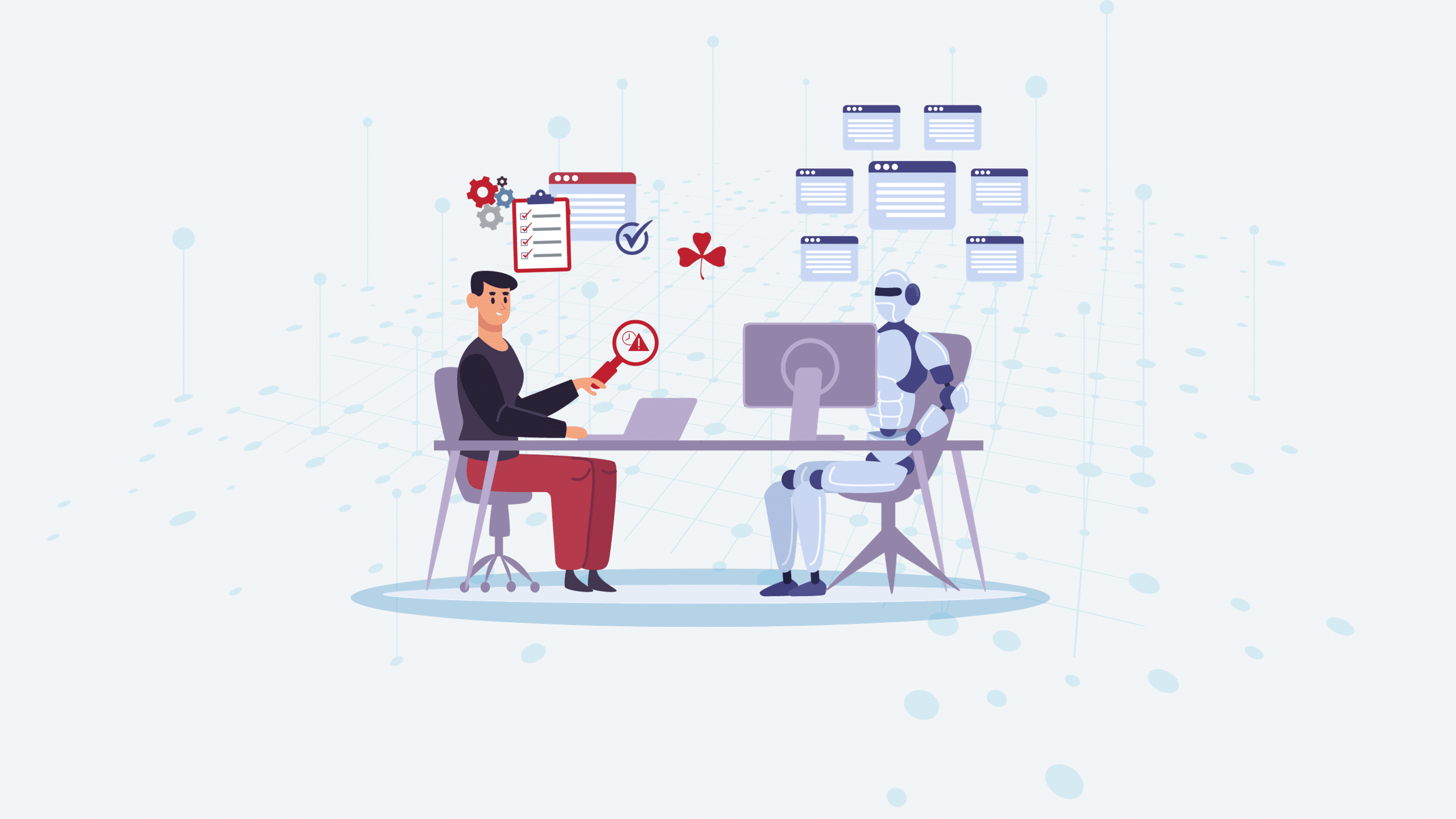Sometimes, you have to work up the nerve to take a leap into the unknown. That’s why you see first-time skydivers clutching their jumpseat or rock climbers questioning a new (and vertigo-inducing) route.
Risk-taking isn’t limited to extreme sports, though. Business activities like implementing AI are leaving lots of business professionals and executives with sweaty palms and second guesses.
The good news is that businesses have options besides “jump” or “don’t jump.” Risk mitigation activities are a smart move for companies to protect themselves and their people, especially as it relates to data privacy and protection.
Privacy impact assessments (PIAs) are a great step for companies to mitigate AI risk. (They’re also an increasingly required component of data privacy per emerging state regulations.) Instead of leaping into a new technology, they can take strategic hops that minimize missteps and fallout.
Ready to jump in? Let’s look at how businesses can use PIAs to minimize liability with AI.
Understanding the risks and rewards of AI
No matter what industry you’re in, there are AI tools on the market designed to help you run your business more efficiently, effectively, and profitably. More specifically, AI promises to help you:
- Automate workflows
- Reduce manual error
- Personalize content, services, and products
- Gain insight into consumer behavior
- Reduce operational costs
- Make more informed decisions
Yet, for the (significant) benefits businesses can experience, there are risks to account for. AI is a developing field, and the ROI can be murky, especially if tools don’t deliver on their promises or businesses adopt AI without a clear use case. Integrating new software into existing workflows can also be challenging, especially if there is a steep learning curve.
Moreover, AI can be straight-up faulty sometimes. Businesses should establish a clear oversight plan before diving too deep into AI waters.
But these issues don’t even touch one of the biggest areas of concern: data privacy. Even when used with the best intentions, AI models can lead to serious privacy vulnerabilities that can impact your business’ reputation, client trust, and bottom line.
Data privacy vulnerabilities to expect with AI
There are still risks even for businesses that use generative AI within a closed ecosystem. Without the proper protections, businesses may run into issues like:
- Data use: Some types of data require special handling. Companies must think about what types of data they have (hello there, data inventories!), how data can and should be used, and what the implications of that use are. No, just because you want to use that personal data in an AI tool, does not mean you should.
- Disclosures: Depending on usage, incorporating AI into your processes may require updated disclosures in privacy notices.
- Data poisoning: Corrupted training data can mislead AI models and compromise user confidentiality.
- Model security and theft: AI models with inadequate security measures can lead to data breaches and compromised data security. And when an AI model’s architecture is stolen, it can expose the training data, leading to privacy breaches.
- Bias and discrimination: AI models often reflect and amplify human biases, which can violate data privacy and anti-discrimination laws. This cross-section between AI and privacy is particularly prone to ethical issues, such as using personal information in AI decision-making.
- Model explainability: AI models can be opaque. Businesses can’t demonstrate the AI’s decision-making processes, which can undermine user consent and regulations.
- Hacking and phishing schemes: Bad actors can use AI to create more sophisticated malware or phishing schemes, which can lead to a breach of the company network.
Beyond corporate liability, missteps with AI and data can jeopardize consumer trust. AI models are known as “black boxes” because how they generate output is frequently unclear. This lack of transparency can leave your customers feeling queasy about how your business practices and their personal data intersect.
Even with these potential risks, businesses can reap the benefits of using AI—as long as they carefully assess the tools they use, identify and mitigate privacy risks, and wrap AI usage into their overall privacy program.
Sound like a lot? It can be, and it’s an ongoing effort. But we’re nothing if not solution-oriented! Let’s talk about how one particular privacy activity can help: the privacy impact assessment.
AI Governance Roadmap: Business Guide
Our AI Governance Roadmap guides you to success in developing an AI governance program.

What Is a Privacy Impact Assessment?
Privacy impact assessments (PIAs) evaluate the risks to personal information posed by an organization’s processes, features, services, programs, or products.
Through a PIA, your business analyzes how it collects, uses, shares, and maintains the personal information of those who interact with it, such as consumers, employees, prospective employees, and vendors.
The primary legal purpose of a PIA is to demonstrate that your business has complied with relevant legal, regulatory, and policy requirements for data privacy.
But that’s not where the function of a PIA ends.
PIAs allow businesses to identify and manage potential privacy risks when handling personal information. They help ensure that people’s privacy is protected, especially when there is a high risk of harm to individuals.
PIAs can also help businesses create systems that respect privacy and build trust with customers. PIAs offer a way for businesses to get ahead of privacy problems before they occur.
By doing so, they can avoid legal issues and create a culture of privacy.
When a PIA is legally required
Until recently, PIAs were mostly just requirements for U.S. government agencies, but more businesses across the United States are now required to conduct PIAs.
While there is no omnibus federal data privacy legislation in the United States, an expanding list of state-level data privacy laws provides regulatory guidance for businesses.
Currently, a number of state privacy laws require that businesses execute a PIA for certain data processing practices, including:
- California
- Colorado
- Connecticut
- Delaware
- Virginia
- Montana
- Texas
- Oregon
- Tennessee
- Indiana
AI and what constitutes a “high-risk” activity
Under the GDPR, the upcoming EU AI Act, and some U.S. state laws, businesses must conduct a data protection impact assessment when data processing is likely to result in “high risks” to individuals’ rights and freedoms. The EU AI Act, in particular, spells out the different risk levels within AI. These categories include:
- Unacceptable risk (AI applications that manipulate behavior, require real-time biometric identification, or use social scoring)
- High-risk: applications that pose risks to health, safety, or fundamental rights
- Limited risk: AI under that falls under this risk level meets specific transparency requirements, such as an individual being informed they’re interacting with an AI tool and given the option to proceed
- Minimal risk: As the lowest risk level, this refers to common AI applications like spam filters or inventory management systems
Companies that use AI algorithms or models will likely need to perform PIAs when those algorithms perform high-risk activities, such as analyzing consumers or potential employees.
In this particular scenario, the use of AI could lead to profiling that results in financial repercussions, unfair or deceptive treatment, or any other substantial injury to the person being profiled (think, an AI algorithm leading to unintentional but racially biased job candidate screening).
But even when state laws do not explicitly require a PIA, proactive measures protect consumer trust and ensure compliance.
Six steps for an effective privacy impact assessment
Here are six steps you can use to mitigate AI risks through an effective privacy impact assessment:
- Determine applicable jurisdictions: Identify the jurisdictions that apply to your business, their requirements, and what the applicable timelines are.
- Involve all stakeholders: Privacy programs should involve legal, IT, marketing, HR, and customer service departments, but this isn’t a finite list! Think broadly about who interacts with personal information and/or AI tools in your business. Include all relevant stakeholders in privacy program conversations.
- Develop a governance plan: Create a governance plan that outlines triggers and identifies when a PIA will be necessary, as well as responsible teams, essential training, and a review process.
- Establish processes and policies: Define end-to-end processes for PIAs, incorporating clear documentation and policies.
- Identify potential risks: Address system vulnerabilities and update safeguards to protect against potential problems. Once you’ve compiled your findings, review and mitigate accordingly.
- Regularly review PIAs: Depending on applicable regulations and organizational factors, regularly update PIAs to stay compliant with legal and regulatory requirements.
Learn more about Privacy Impact Assessments here.
Don’t jump into the AI unknown without a partner
By adapting Privacy Impact Assessments to address AI’s specific challenges, businesses can confidently embrace the AI era while upholding the highest standards of data privacy.
Schedule a call with Red Clover Advisors today to learn how we can help your business reduce the risks involved with AI.


